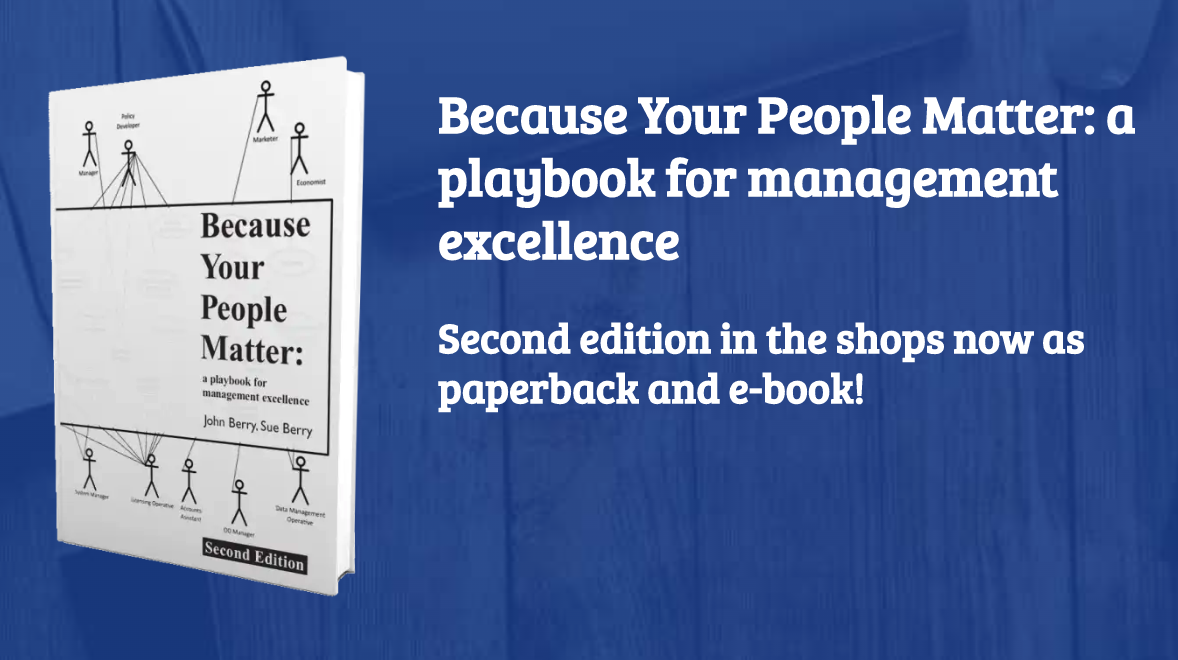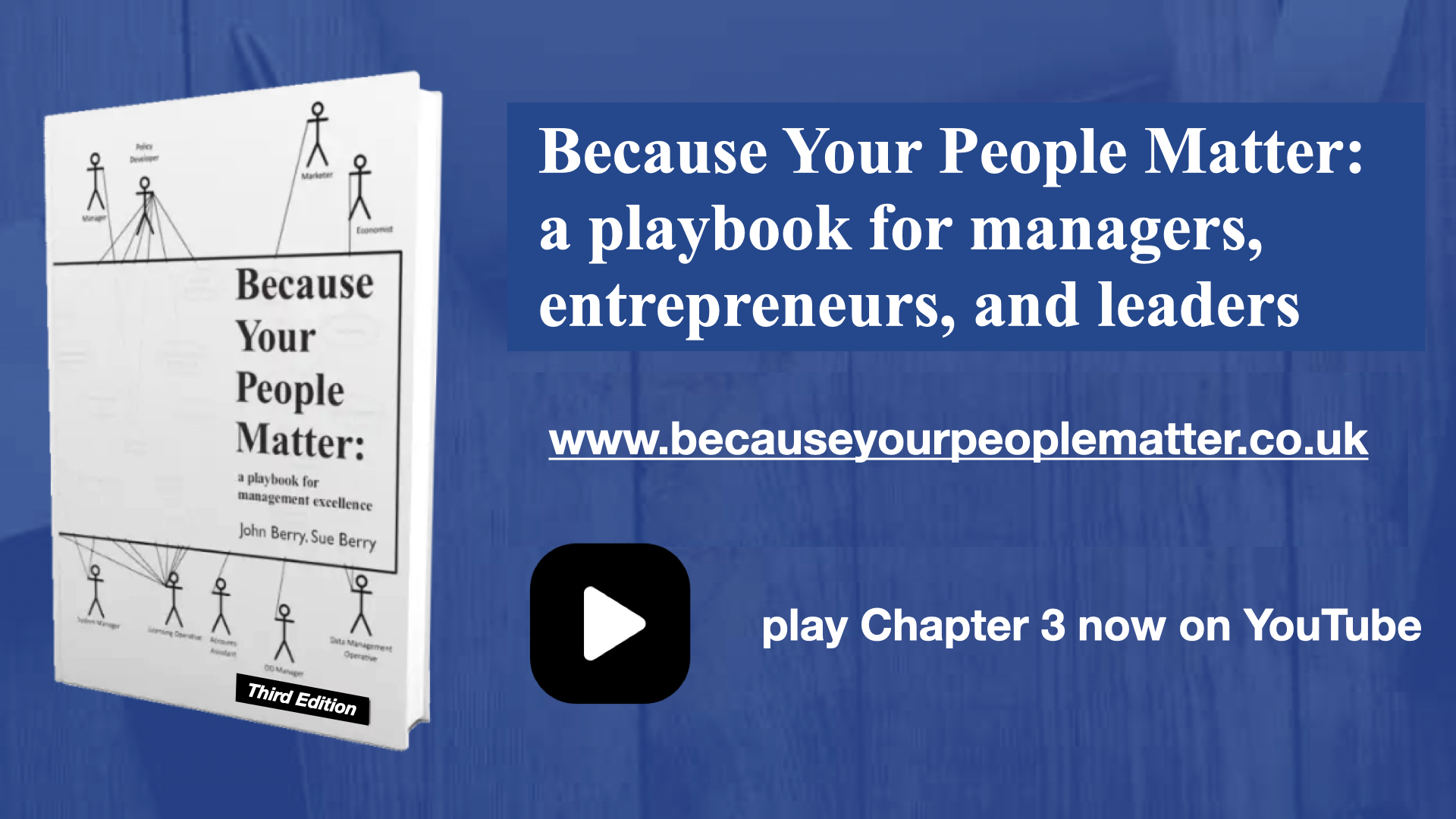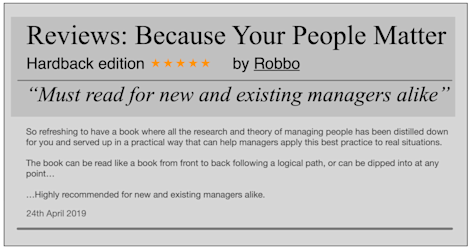One of twelve chapters of our book, Because Your People Matter: a playbook for managers, entrepreneurs, and leaders, serialised here.
Gaining Services: employing people and contracting suppliers
Written by John Berry & Sue Berry on 29th November 2022. Revised 14th December 2022.
6 min read
Chapter 3: Gaining Services
Chapter Summary
 Gaining the services of people starts with the manager thinking about what those services are and how they might be procured. In the UK we have very muddled regulations that determine worker status – employee, worker, or supplier. In fact, it’s impossible for the manager to determine the status of his or her workers with certainty. In the end, only a government agency like the HMRC or an employment tribunal or court can do this. And simply, that’s not fair on the manager.
Gaining the services of people starts with the manager thinking about what those services are and how they might be procured. In the UK we have very muddled regulations that determine worker status – employee, worker, or supplier. In fact, it’s impossible for the manager to determine the status of his or her workers with certainty. In the end, only a government agency like the HMRC or an employment tribunal or court can do this. And simply, that’s not fair on the manager.
But be that as it may, the manager must reason what that status should be – what it is that they want – and then set up the right structure. Then, probably, the right status will follow.
Gaining services
We highlight that there are three ways a manager can engage with a person, to have then do work on behalf of the firm. The first is our focus here – the employee. Employees are under contracts of service. And they enjoy the strongest worker rights. The second is the other end of the spectrum – the supplier. The supplier is a separate entity, a self-employed person or a person employed in their own limited liability company, trading at arms’ length with the firm, under a contract for services. They don’t get regular pay. They get paid for deliverables. And the third is the worker – almost an employee, but not quite.
Managers get those states confused. The confusion comes in part because many employees or workers want to be a supplier, because they can charge more and enjoy reduced tax. That beneficial tax state is diminishing, to the point now that the benefit is almost indiscernible. The confusion also comes from an over-enthusiasm on the part of managers to avoid employing people, choosing instead to call them associates or contractors. Remember the ‘duck test’. If it gets paid regularly like an employee, turns up every day like an employee and gets told what to do like an employee, it is almost certainly an employee.
One day soon, HMRC are going to have a purge, catching all suppliers who are really employees. Watch out! It will be costly for both parties.
So, given that the intended status is ‘employee’, how does the manager get some of those and enter an appropriate employment contract with them?
Hiring employees

Firstly, the manager must characterise the person needed. We describe how modelling can help here, illustrating the functions, roles, and jobs. The essential document is the job description. Once a quality job description is available, the person who will excel in the job can be defined and a person specification written.
Secondly, the manager must find the person defined by the person specification. That’s done through search. There are three main search methods: recruitment agencies, advertising, and headhunting. Recruitment agencies use jobs boards to advertise. Headhunting has come on hugely and now typically uses LinkedIn. Now the manager can approach would-be candidates directly.
We propose a process with seven distinct activities from description of the roles to on-boarding the jobholder. Every firm should build such a process embracing appropriate science at each stage.
Open window
We recommend that firms abandon the idea of popping up to announce a vacancy, then trying to find someone in a few weeks. The chances of success are reduced by only searching when a vacancy arises. The window must be ever open, searching and selecting as soon as a good candidate comes along.
Then it’s down to selection. Selection is a science. There are four tools in this science: intelligence (or general mental ability) tests, personality assessments, work sample tests and the structured (pre-scored) interview. Never dump the science. Always use selection instruments with high predictive validity and aim for the best predictive validity by using several tools together. We discuss psychometric assessment tools at length.
Whist we are clear about the essential use of high predictive-validity tools in running a high-quality process, we are also realistic.
Using science
Psychometric assessment is an aid to decision making but no one tool should be used alone. Some candidates with cognitive disabilities will have problems taking some types of tests and may have to be given alternatives. Psychometric assessments like those reporting on intelligence and personality should allow managers to from an opinion and ask further questions. They should not incorporate a decision threshold.
We then discuss how to land the catch. The fishing metaphor is strong. Never assume that the candidate will fawn over the firm and be grateful of an offer. Work to land them. Get close to them. Make the offer personally. And keep in touch until their bum is on your seat.
Compromise in selection
 We also address compromise. Often managers will make compromise and select a less than ideal candidate at point of selection. We argue that this is wrong. We argue that compromise needs a return to the job description to change the accountabilities to better suit the chosen candidate. That in turn may need a return to the organisation modelling since some roles may have to be given to others.
We also address compromise. Often managers will make compromise and select a less than ideal candidate at point of selection. We argue that this is wrong. We argue that compromise needs a return to the job description to change the accountabilities to better suit the chosen candidate. That in turn may need a return to the organisation modelling since some roles may have to be given to others.
Once in a firm and performing, all managers hope that this state sustains for a long time. We counter the popular myth that tenure is shortening to just one or two years, but we also discuss what managers must do to make sure employees stay with the firm for a reasonable time. Managers must ensure that employees quit for reasons external to the firm such as career change.
Volunteers - a special case
Finally, we note that some managers believe that recruiting and managing volunteers is a very special case. We argue that whilst it needs to be understood, the person volunteering is still human and has needs that they seek to satisfy in the job. The theories and models of commitment and engagement still apply. We propose a model to understand what the manager must do to find and engage the volunteer, and another model to understand how they might retain the volunteer once in post.